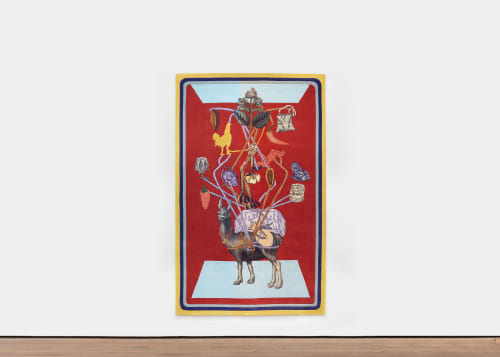GRIMM is pleased to announce the recent acquisition of Claudia Martínez Garay's Chunka Tawayuq Pacha (2022) by Krannert Art Museum in Champaign, IL (US).
Claudia Martínez Garay’s Pacha works are an ongoing series that reflects on time and its circularity, complicating our understanding of what constitutes documenting a world that tries to approach the past while reflecting on the present and while speculates on its future through the juxtaposition of visual and historical archives. In Andean Cosmovision, “Pacha” can be translated to the indivisible unity of space and time in a broader sense than purely the universe or the world. Therefore, each work presents a snapshot of the entity in which we exist, attempting to explain its complexities through Martínez Garay’s considered selection of non-directly related imagery and color combinations. These collages reference the three times (past, present, and future) and the Quenchuan concept of the three realms of the cosmos: the upper world, the living world, and the underworld. Although each work is singular in its approach, they are also part of something bigger, inspired by the complex shifts, rearrangements, and transitions of time and space that constitute our existence. These multi-temporal visual gatherings - at times deeply introspective, at others anthropological - are charged with symbolism. Each work combines a diverse archive of sources such as Martínez Garay’s schoolbooks on Peruvian history, pre-Columbian iconography, ethnographic and archaeological journals, propaganda posters, botanical illustrations, and Andean cosmology symbols embedded in popular culture.
For example, in Chunka Tawayuq Pacha (2022), representations of the rich nature and fertile earth of the Andean region, such as cacao fruit and chili peppers, extend out from a llama, used as burden animals by Andean natives for centuries. The animal is saddled with the weight of a world to be carried on, with natural native elements, such as the Cinchona plant, cacao, and cotton, and simple and banal things, such as toilet paper, a jar, and an animal made purse. This burden defies gravity, almost lifting the weight imposed by colonialism and its extraction that is still present today. For Martínez Garay, these Pacha works animate flashbacks through time, where long durations of political upheaval often mask the gaps in personal and collective histories.

